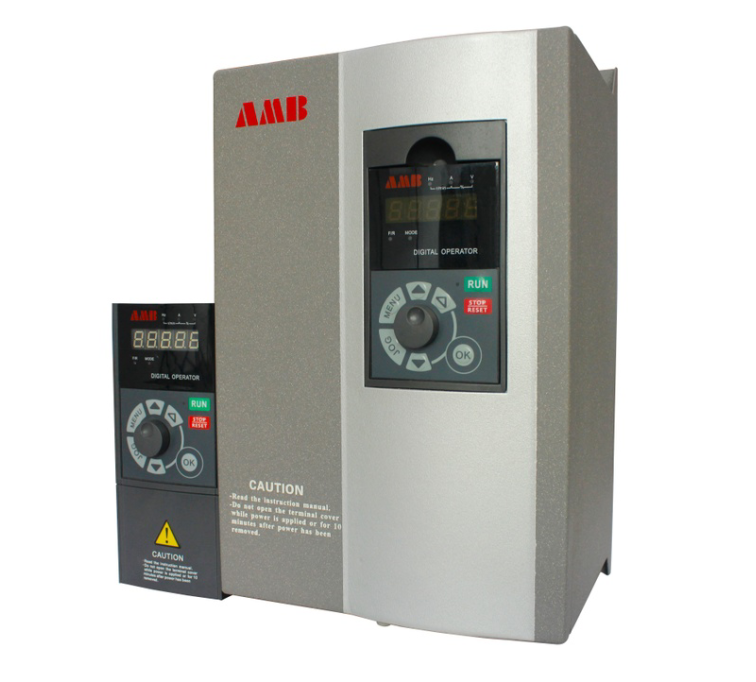
Frequency converter plays a protective role on the motor, but it does not mean that the motor will not be burned. For most cases, the frequency converter can protect the motor from burning, such as overload, lack of phase, but this depends on your parameter settings and actual use. For example, if your over-current protection setting is too large (generally, the default is 150%), if you increase it, the motor will be easy to burn if the motor is operated above 100% rated current for a long time. For example, frequent start and stop, coupled with high current, if overload is simply reset and then open, it is easy to burn the motor.
If you want the inverter to protect the motor completely, you should pay attention to the process and setting. The setting parameters should be set correctly, and the overload coefficient should not be increased blindly. The motor should be maintained and inspected frequently. The process should pay attention to the load change (we require that the general current is not more than 90%, if it exceeds, it should be controlled and checked).
Why does the frequency converter burn the motor
The heat dissipation of an ordinary asynchronous motor is cooled by the fan behind the motor bottom. If the motor operates at low frequency for a long time (that is, if the motor runs under the rated frequency for a long time, the motor speed is low, and the fan blowing air volume is small, so that the heat dissipation of the motor is poor, and if it is too hot, the machine will be burned. If there is a problem with the motor, the motor current will increase. If the maximum current of the inverter is exceeded, the inverter will implement protection and stop the output, and report a fault code to tell the user.
The converter shows OC, which means over-current. The solution is to change the motor into a frequency conversion special motor, or add a cooling fan to the motor. Or a higher power motor.
Explanation of burning machine technology
"The frequency converters for motor burning are basically inter turn short circuit, phase to phase short circuit and short circuit to ground. Why is the frequency converter easy to burn the motor, and most of them are frequency conversion motors, which technical indicators are related to?"
In the case of power frequency power supply, the motor winding input is a three-phase 50 Hz sine wave voltage, the induced voltage generated by the winding is also low, and the surge component in the line is small.
In the case of variable frequency power supply, the inverter converts the DC voltage into three-phase AC voltage, and realizes the output of three-phase AC voltage by controlling the switch elements of six bridge arms on and off. After the frequency converter is connected, the carrier frequency is about several thousand to more than ten kilohertz, which makes the stator winding of the motor bear a very high voltage rise rate, which is equivalent to imposing a steep impulse voltage on the motor, which makes the turn to turn insulation of the motor withstand a more severe test. With the increase of voltage change rate DV / DT, the turn to turn voltage change rate DV / dt of motor windings is very high, and the distribution of winding voltage becomes very uneven, thus the power supply conditions of motor become "bad". The fault of winding inter turn short circuit is increased and the fault rate of motor is increased. The PWM waveform output by frequency converter will produce harmonic voltage of various components in the power supply circuit of motor winding. According to the characteristics of the inductor, the faster the current changes, the higher the induced voltage of the inductor
The induced voltage of motor winding is higher than that of power frequency power supply. The insulation defects that cannot be exposed in power frequency power supply can not withstand the impact of induced voltage under high frequency carrier wave, so the voltage breakdown between turns or between windings occurs. As we all know, the inverter has a perfect protection circuit. With the inverter, the motor will not burn? The answer is no, the protection circuit of the inverter is not universal. Compared with the power frequency power supply, with the inverter, the motor is easier to burn. The phase to phase, turn to turn short circuit or grounding of the motor winding causes the sudden short circuit of the motor winding, which may blow up the module or burn the motor in operation.
Under the influence of high-speed switching of semiconductor switch, the output voltage waveform of frequency converter will make the voltage superimposed on the running voltage of motor, and pulse over-voltage will be generated on the motor terminal. The peak value is about 2 times of the DC voltage, which poses a threat to the ground insulation of the motor, and the insulation to the ground will accelerate aging under the repeated impact of high voltage.
Causes of motor burn out caused by frequency converter
In fact, the motor fault is not caused by the motor itself, most of which are caused by the nonstandard debugging of frequency converter or the use of non frequency conversion motor when the variable frequency motor is used. There are mainly the following situations:
1. Use ordinary motor as frequency conversion motor
Because the cooling fan of the ordinary motor is connected with the rotating shaft, when the frequency converter is used to regulate the speed, the speed is unstable, which can not reach the rated speed of the motor, so the cooling fan can not play a normal role, resulting in poor heat dissipation of the motor; in addition, the ordinary motor is not designed according to the requirements of frequency conversion, so that the motor is heated or burned.
2. Variable frequency motor and frequency converter can be used together without debugging
Vector control and V / F curve control are the two most commonly used methods of motor control by frequency converter. In each control mode, the type of motor (synchronous, asynchronous, with or without encoder), rated power, rated voltage, rated current, speed or pole number, rated frequency, maximum operating frequency, acceleration and deceleration time of motor starting and stopping, and protection side of motor controlled by frequency converter It is necessary to set the protection ratio coefficient and carrier frequency. After these parameters are set, we can choose vector control or V / F control. When selecting vector control, the motor should be paired with the frequency converter for dynamic self-learning or static self-learning with load. After self-learning, the motor can play the accuracy of vector control by cooperating with the inverter; when selecting V / F control, self-learning is not required, and the parameters are adjusted and the motor is powered on directly.
3. The running direction of the variable frequency motor fan is inconsistent with the rotation direction marked on the fan. The fan can not play a role, resulting in poor heat dissipation of the motor, and the heat generated by the motor can not be sent out, resulting in the motor heating or burning.
4. 2 and 3 of the above three cases occurred most frequently
In view of the above situation, it is suggested that customers should choose frequency conversion motor when choosing inverter control motor. Although the initial investment is a little higher, the quality is guaranteed, the fault-free operation time is long, and it is not easy to cause shutdown caused by motor or frequency converter fault, and the after-sales service of good quality inverter is guaranteed and the response time is fast.

|
|

|
| The public, | Mobile station |
 0755-81719517
0755-81719517
|
|
 0755-81719530 0755-81719530 |
 [email protected] [email protected] |
 Floor 1, 5 and 6, building 7, lijincheng science and technology industrial park, gongye dong road, longhua new district, shenzhen Floor 1, 5 and 6, building 7, lijincheng science and technology industrial park, gongye dong road, longhua new district, shenzhen |
|